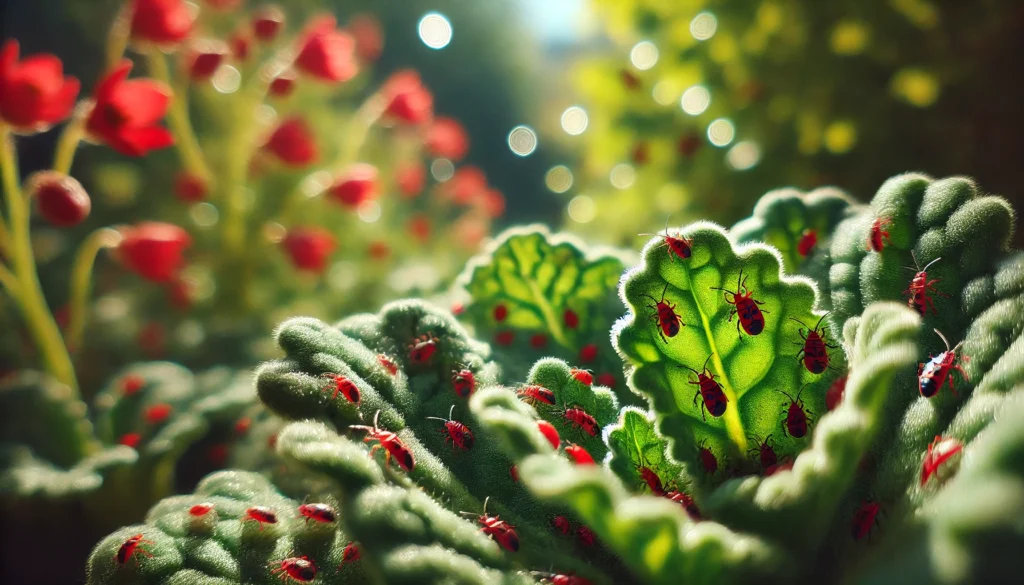Tiny red bugs are a common sight in gardens, homes, and outdoor spaces, often causing curiosity or concern. These diminutive pests, while seemingly harmless at first glance, can multiply quickly and create unwanted infestations. Understanding their nature and learning effective ways to control them is crucial for maintaining a clean and bug-free environment.
What Are Tiny Red Bugs?
Tiny red bugs are small insects, often mistaken for mites, spiders, or other similar pests. Common species include clover mites and red spider mites, both of which are known for their vibrant red color and diminutive size.
These bugs are typically found in:
- Lawns and gardens.
- Cracks and crevices around homes.
- Window sills and outdoor furniture.
While not all tiny red bugs cause significant harm, some species can damage plants or become a nuisance when they invade homes.
How to Identify Tiny Red Bugs
To effectively manage tiny red bugs, proper identification is essential. Here are some key characteristics to look for:
- Color and Size: They are bright red and usually less than 1mm in size.
- Behavior: Clover mites often gather in large groups and leave a reddish stain when squished.
- Habitat: They prefer warm and sunny spots and are often seen crawling on walls or windows.
- Movement: Tiny red bugs move slowly compared to other insects.
Where Do Tiny Red Bugs Come From?
Understanding the origin of tiny red bugs can help prevent their reappearance. These insects thrive in:
- Outdoor Vegetation: Overgrown grass, shrubs, and gardens are common breeding grounds.
- Cracks and Holes: They enter homes through small gaps in windows, doors, or foundations.
- Humidity: High-moisture areas provide the perfect environment for their growth.
By identifying these sources, you can take proactive measures to eliminate them effectively.
Are Tiny Red Bugs Harmful?
Most tiny red bugs are not harmful to humans or pets, but their presence can be bothersome.
- For Plants: Red spider mites suck the sap from plants, leading to discoloration and wilting.
- For Homes: Clover mites are more of a nuisance than a danger. They do not bite but can stain surfaces when crushed.
- For Allergies: While rare, some individuals may develop mild allergies from exposure to these bugs.
How to Prevent Tiny Red Bugs
Prevention is often the first step to managing tiny red bugs. The following measures can be taken to deter them:
- Seal cracks and gaps around windows, doors, and foundations.
- Trim vegetation near the home to minimize habitats.
- Reduce excess moisture around the property.
- Keep window screens in good repair.
These strategies will help create an environment less conducive to infestations.
Effective Methods to Control Tiny Red Bugs
If an infestation of tiny red bugs occurs, several control methods can be employed:
Natural Remedies
- Diatomaceous Earth: This natural powder dehydrates and kills tiny red bugs when they crawl over it.
- Soapy Water: A mixture of soap and water can be sprayed on surfaces to kill or repel them.
- Essential Oils: Oils like tea tree or peppermint can be used as natural deterrents.
Chemical Treatments
- Insecticides: Use products labeled specifically for mites or clover mites.
- Perimeter Sprays: Apply these around the exterior of the home to prevent entry.
- Spot Treatments: Focus on areas with heavy infestations for quick results.
Professional Services
When infestations are severe, hiring pest control professionals ensures complete removal. Experts use specialized tools and treatments to target and eliminate tiny red bugs effectively.
Common Misconceptions About Tiny Red Bugs
Despite their prominence, myths about tiny red bugs persist:
- “All red bugs bite.” Most tiny red bugs, like clover mites, do not bite.
- “They signal poor hygiene.” These bugs thrive in any environment with the right conditions, not just unclean spaces.
- “They disappear naturally.” Without intervention, tiny red bugs can multiply and worsen over time.
DIY Remedies for Tiny Red Bugs
Home remedies are a cost-effective solution for managing tiny red bugs. Try these:
- Sprinkle baking soda near entry points.
- Create a vinegar spray for indoor and outdoor use.
- Use double-sided tape around windows to trap bugs.
Signs You May Have a Tiny Red Bug Infestation
Look for the following indications:
- Reddish stains on walls or furniture.
- Clusters of bugs near windows or outdoor spaces.
- Discolored or damaged plant leaves.
Early detection is key to preventing widespread infestations.
How Weather Affects Tiny Red Bugs
Weather plays a significant role in tiny red bug behavior. Warm, dry conditions often lead to increased activity, while heavy rain can reduce their presence temporarily. Understanding these patterns can help in planning preventive measures.
Benefits of Professional Pest Control for Tiny Red Bugs
Professional pest control services offer advantages like:
- Comprehensive inspections to identify all infestation points.
- Safe and effective treatments tailored to specific pests.
- Long-term solutions with preventive recommendations.
Why Do Tiny Red Bugs Leave Stains?
When crushed, tiny red bugs leave stains due to their pigmented body fluids. This staining is more noticeable on light-colored surfaces like walls, furniture, or fabrics. To avoid stains, it’s best to use gentle removal methods, like vacuuming, instead of squishing them.
Are Tiny Red Bugs Seasonal?
Tiny red bugs are most active during spring and early summer. During this time, their populations thrive in the warm weather, making preventive measures especially important.
Benefits of Maintaining a Bug-Free Home
Beyond the immediate relief of removing tiny red bugs, a bug-free home offers:
- Improved hygiene and cleanliness.
- Reduced risk of allergens or stains.
- A more comfortable and stress-free living environment.
Conclusion
Tiny red bugs, though small and seemingly insignificant, can pose challenges when left unchecked. By understanding their behavior, implementing preventive measures, and utilizing natural or chemical control methods, you can effectively manage and eliminate these pests. With vigilance and proper care, your home and garden can remain bug-free and thriving.
FAQs
What are tiny red bugs called?
Commonly, they are referred to as clover mites or red spider mites, depending on the species.
Do tiny red bugs bite humans?
Most species do not bite humans but may become a nuisance in large numbers.
How can I get rid of tiny red bugs naturally?
Use diatomaceous earth, essential oils, or soapy water for a natural solution.
Can tiny red bugs damage my plants?
Yes, red spider mites feed on plant sap, potentially causing significant damage.
Are tiny red bugs visible year-round?
They are more active during warmer seasons, particularly spring and summer.
Is it necessary to call pest control for tiny red bugs?
If home remedies fail, professional pest control can offer effective and lasting solutions.



